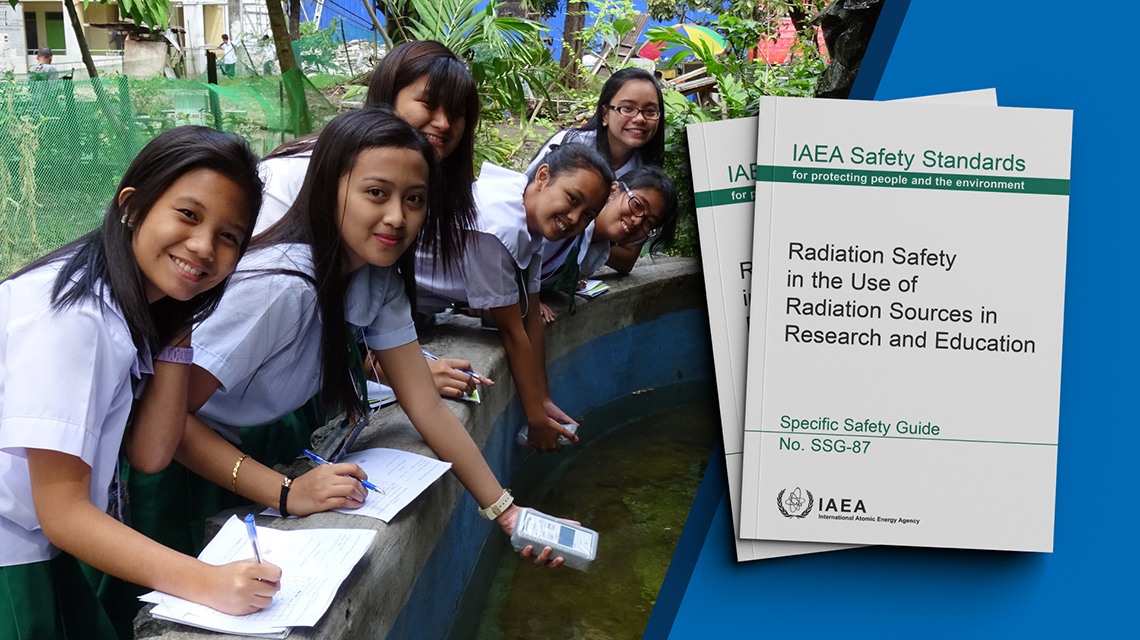Source: International Atomic Energy Agency – IAEA
The IAEA has published a safety guide to protect students and researchers who use radioactive material or radiation in learning or research.
Students and researchers who work with radiation sources are integral to shaping a strong safety culture in tomorrow’s nuclear workforce. To provide guidance, the IAEA has published the tailored guide with recommendations for the safe use of radioactive material in research and educational establishments, entitled Radiation Safety in the Use of Radiation Sources in Research and Education.
“The use of radiation sources and radioactive material in academic and research programmes is increasing globally,” said Haridasan Pappinisseri Puthanveedu, IAEA Senior Safety Officer, who coordinated the development of the publication, adding that “a harmonized effort is necessary to protect students and teachers in institutions worldwide as well as the general public.”
A wide variety of radiation sources are used in research and education, from teaching basic science principles in secondary schools to scientific research projects. These sources include sealed radioactive sources, unsealed radioactive material, and radiation generators such as X ray units, accelerators and neutron generators, which can be used for testing radiation monitoring instruments in laboratories and in secondary school demonstrations.
The recommendations in this publication are aimed primarily at academic and research institutions that are authorized to use sealed radiation sources in their programme. They may also be of interest to individuals working for regulatory bodies and other organizations involved in the design, manufacture, supply and service of sealed radiation sources and associated equipment for research and education.
“This new safety guide forms part of our continuous effort to promote partnerships among schools, universities, research institutes and national regulators, to ensure the safe handling of radioactive materials,” Puthanveedu emphasised.
The guidance covers the basic principles of radiation protection, information about different types of radiation sources, the duties and responsibilities of operating organizations, recommendations for the design of facilities, laboratories and equipment and advice on conducting safety assessments. As the use of radioactive sources can lead to the generation of radioactive waste, the guide also covers the safe transportation, storage and disposal of radioactive material and waste.
“This new guide will foster a safety culture from the very beginning, even as early as at the secondary school level, ensuring that future professionals prioritize safety in their work — a benefit that extends beyond fields related to radiation,” said Emilia Kopeć, a radiation protection expert in the Netherlands.
The information sets out concrete measures for controlling exposure to radiation, including recommendations for the prevention of accidents and the protection of members of the public who might inadvertently be exposed to radiation, as well as guidance for emergency exposure situations. In addition, practical guidance is provided on the use of radiation sources with regard to the age of students, starting from secondary school, as well as case studies related to radiation protection of students in medical education.
Rafael Garcia-Tenorio, Director of the National Centre of Accelerators at the University of Seville in Spain said: “In my centre, all young technicians and PhD students will have this comprehensive guide as a reference. It will also be extremely useful in developing countries.”
The new publication is available free of charge here.
This safety guide forms part of the IAEA’s Safety Standards, which provide the fundamental principles, requirements and recommendations to ensure nuclear safety. The series serves as a global reference for protecting people and the environment and contributes to a harmonized high level of safety worldwide.
Further information on the IAEA Safety Standards can be found here, and IAEA e-learning modules on the topic can be accessed in six languages here.









